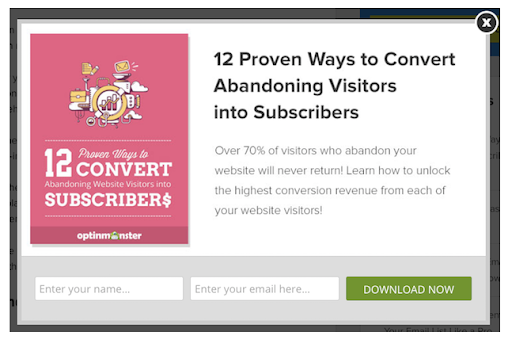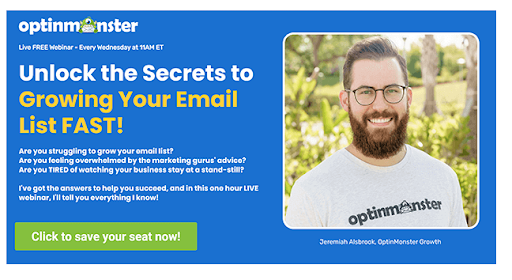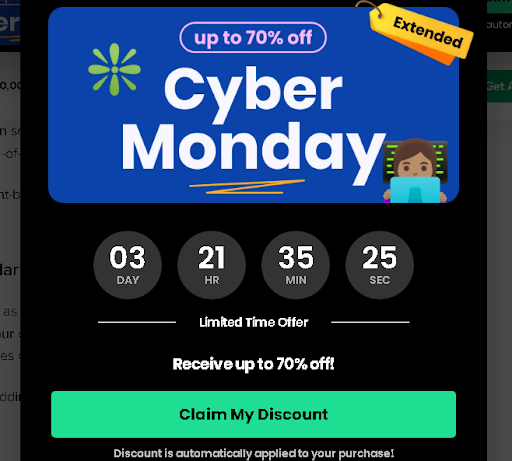
Image by talha khalil from Pixabay
Are you ready to dramatically grow your email list and connect with more potential customers?
If you answered yes, it’s time to talk about lead magnets.
Simply put, lead magnets are special offers that are available to visitors when they are browsing your website or social media. They usually appear as a popup, social media post, or on the sidebar of your website.
These handy little marketing tools aim to offer readers value and convince them to sign up for your email list.
Lead magnets are vital because they help you connect with prospects and build rapport with existing customers. Once a user has joined your lead list, you can stay in contact and nurture them into loyal brand advocates.
Research shows that around 50% of consumers say they would prefer to get promotional emails from brands they enjoy every week. In other words, you can continue to engage with readers after they sign up via a lead magnet.
Today, we will look at a few effective lead magnet ideas you can use to get more email subscribers and grow your business.
Let’s dive in!
Ultimate Guides + Case Studies
Ultimate guides and case studies are some of the most popular and powerful lead magnets. There’s an excellent chance you’ve interacted with a brand in the past after they’ve offered you a guide or comprehensive study.
There are a few reasons this type of magnet works. For starters, business leaders across all industries can come up with multiple ideas for guides or studies.
Here are a few fictional examples so you can see what I mean:
– SEO SaaS – Ultimate SEO Guide for Beginners
– Online pet store – Step-by-Step Guide for Taking Care of Your New Puppy
– Clothing store – Spring Fashion 2023: Ultimate Guide
Now, here’s a real example:

Ultimate Guide Lead Magnet Example
These examples lead me to my next point – guides and case studies generally cater to a specific audience subset. It’s not uncommon for businesses to create many different lead magnet guides that match their customer segments. This is a smart move because 4 out of 5 people say they are more likely to engage with content and offers that resonate with their goals and pain points.
The online pet store example I used earlier is an excellent example. The marketing team for this company could create guides for taking care of cats, dogs, hamsters, birds, and more. It all depends on what the customers want and need. In each guide, they could include links to their products and explain how their brand can help in the training/care process.
Infographics
Infographics are visual lead magnets that can help you grow your email list while boosting on-site traffic. My favorite part about infographics is there’s a ton of room for freedom and flexibility. You can create an infographic lead magnet that covers core industry statistics, interesting facts, or simply condensed versions of longer pieces of content.
The possibilities are endless, especially if your goal is to target a broad audience. A marketing firm, for example, could make hundreds of different infographics based on specific data points and strategies.
If you’re wondering about the effectiveness of infographics, consider this; people remember 65% of visual content, even after 3 days. You can build brand awareness, drive traffic to your website from social media, and skyrocket your subscriber count with these visually stimulating lead magnets.
Event Invitations
Lead magnets are also a fantastic opportunity to invite visitors to your next event. Whether you’re hosting a simple webinar, ask me anything (AMA) event, or releasing a full-fledged online course, this strategy can work for you.
There’s a good chance many of your website visitors don’t follow you on social media and vice versa. So, this type of lead magnet is a great way to bridge the gap and let more people know about your upcoming event.
Surveys show that over 90% of shoppers want to see more interactive content. An invitation to a live event may trigger a visitor to subscribe to your email list and engage with your business in the future.
Here’s an example of a popup we used to get more people to attend our social media webinar:

Webinar Lead Magnet Example
You can also use lead magnets to invite users to ongoing events, such as a giveaway. We use a lead magnet popup to let users know that we are giving away a prize, and they can easily enter the contest by registering with their email address.
Customizable Resources
Next, let’s talk about how customizable resources can double as powerful lead magnets. Many business leaders offer their users tools, checklists, calendars, and other resources that make their life easier.
For instance, a blogger who teaches their audience the benefits of daily writing may create a list of 30 prompts that new subscribers can grab so they can see the benefits for themselves.
The option to download and use a valuable resource could turn many first-time visitors into subscribers.
We created an email marketing checklist for customers that includes a list of vital to-dos and extra space so each marketer can add their own goals. Our readers have told us that they found this particular piece of content helpful because they could make it their own.
Think carefully about the needs of your audience and what kind of resources would aid them on their journey and help them reach their goals.
Exclusive Coupons
The most common type of lead magnet is a simple product discount. People are more than happy to join an email list if it means they can receive an exclusive coupon on their first purchase.
We are still in the middle of the year’s biggest shopping season. So, let’s look at what this type of lead magnet could look like during a Cyber Monday sale:

Promotional Lead Magnet Example
Who doesn’t want to save 70% on their purchase? You’d be hard-pressed to find one person who was remotely interested in this product yet unwilling to accept this offer. The countdown timer is the icing on the metaphorical cake. Over 56% of shoppers experience fear of missing out (FOMO), so a timer that explicitly says when the offer ends will result in more clicks.
During other times of the year, you can offer 20-30% discounts, gifts for first-time customers, and more.
I recommend experimenting with different offers and measuring your results. You can gradually fine-tune your lead magnets based on how users engage with your business. If you run two coupons, 15% off and 25% off, and the latter gets 80% of all conversions; you’d likely stick with the 25% discount.
User Surveys
The last lead magnet idea I have for you today is customer surveys. Believe it or not, surveys about your business and product can convince people who’ve never made a purchase to join your email list.
Consumers are more than happy to speak their minds, especially if the topic is an industry that matters to them. A simple questionnaire can help you connect with visitors, segment new email subscribers, and learn more about your audience as a whole.
We don’t use this type of lead magnet often (twice a year), but it’s always fruitful when we do. Our surveys typically consist of 5-8 questions; some have a list of answers, and others are open-ended. I’ve found that this format encourages honest feedback and allows people to share what they think in their own words.
Once you get your surveys back, look through them and analyze the data. There’s an excellent chance you can learn more about your target audience’s needs, pain points, and goals. Use this information to improve your products and brainstorm new lead magnet ideas.
Final Thoughts
There’s no question that lead magnets are one of the most useful digital marketing tools at your disposal. The 6 ideas presented today have helped us grow multiple brands for almost a decade. I’m confident you can achieve the same results if you’re willing to look at the data and create lead magnets that add value to your audience’s lives.
—-
Syed Balkhi is an award-winning entrepreneur and online marketing expert. He is the co-founder of OptinMonster, WPBeginner, MonsterInsights, and WPForms.
